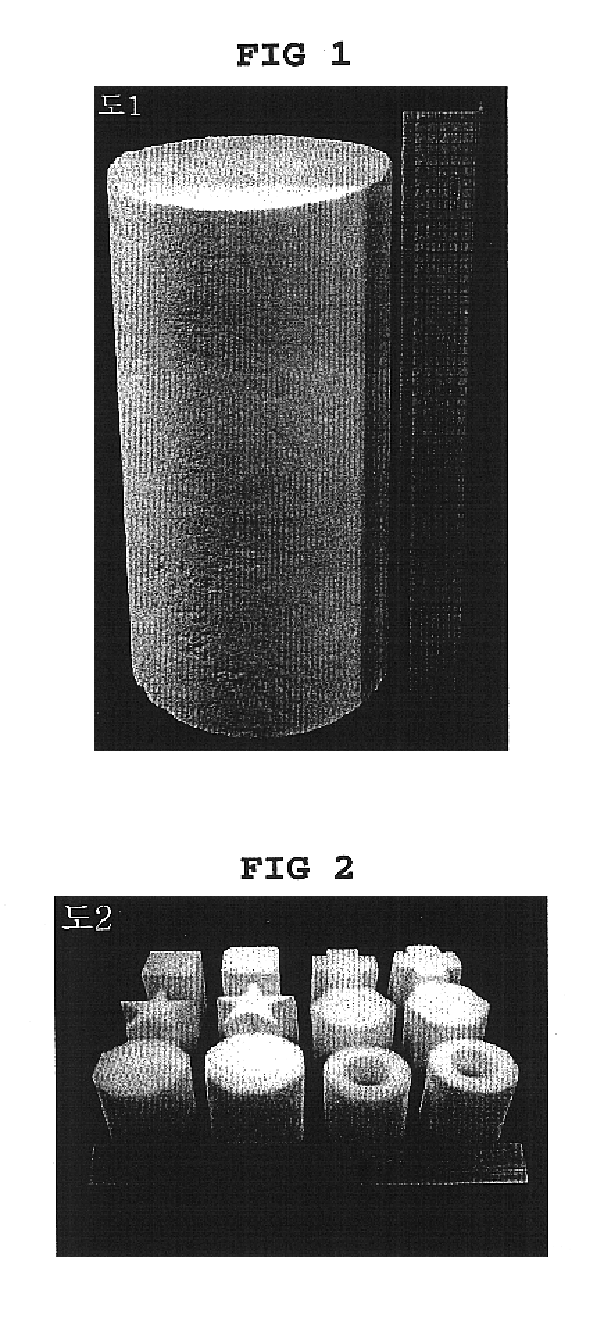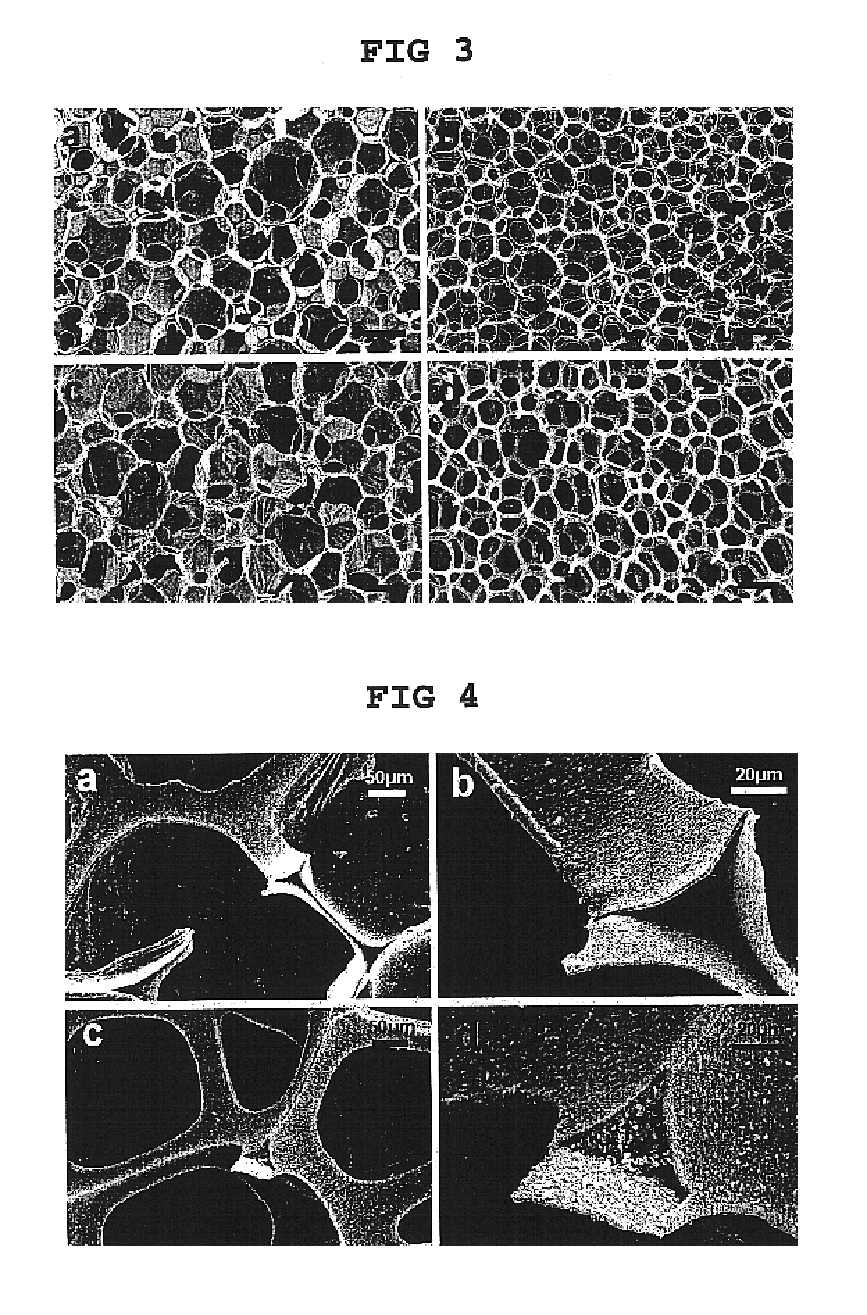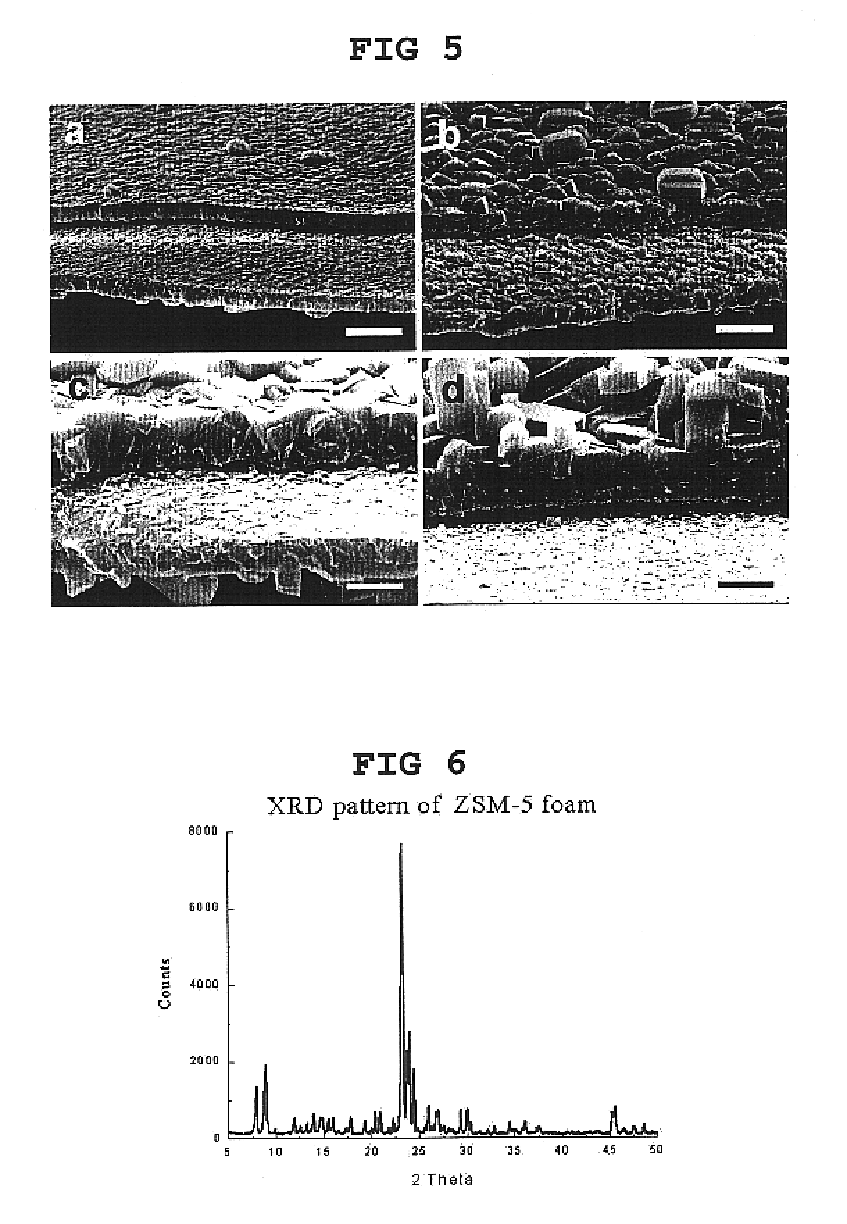Method of the preparation of macroporous foam comprising zeolite or zeotype material
a macroporous foam and zeolite technology, applied in the field of preparation of macroporous foam comprising zeolite or zeotype material, can solve the problems of high energy consumption, difficult flow of liquid or gaseous fluid through powder, increased cost of equipment and reactor, etc., and achieve the effect of maximizing zeolite using efficiency
- Summary
- Abstract
- Description
- Claims
- Application Information
AI Technical Summary
Benefits of technology
Problems solved by technology
Method used
Image
Examples
example 1
Preparation of a Silicalite-1 Foam Using a Polyurethan Sponge as a Template
A 1M solution of tetrapropylammoniumhydroxide (TPAOH), which is used as a template for the preparation of zeolite or zeotype material such as zeotype material having a structure of MFI configuration, is added to 100 g of distilled water, to which 25 g of tetraethyl orthosilicate (TEOS) is added as silicone source and completely hydrolyzed under stirring.
In 30 g of the resulted colorless and transparent gel for the preparation of silicalite-1, 0.4 g of a polyurethane sponge having a suitable size is dipped to be soaked with the gel. The resulted sponge is then subjected to a synthetic reaction in an autoclave at 80.about.250.degree. C. for 2 days. After the reaction, the resulted silicalite-1 foam is washed with distilled water and acetone. The weight of foam thus finally obtained is about 2 g.
example 2
Preparation of a ZSM-5 Zeolite Foam Using a Polyurethane Sponge as a Template
The same procedure as described in Example 1 is repeated to prepare a foam product, except that 0.65 g of sodium aluminate (NaAlO.sub.2) as aluminum source is further added to the gel for the preparation of silicalite-1 in order to synthesize ZSM-5 zeolite.
The ratio of silicon to aluminum in the synthetic gel thus prepared is about 25:1.
example 3
Preparation of a TS-1 Foam Using a Polyurethane Sponge as a Template
The same procedure as described in Example 1 is repeated to prepare a foam product, except that 0.67 g of titanium tetraisopropoxide as titanium source and 10 ml of isopropanol are further added to the gel for the synthesis of silicalite-1 in order to synthesize TS-1 type molecular sieve.
The ratio of silicon to titanium in the synthetic gel thus prepared is about 50:1.
PUM
| Property | Measurement | Unit |
|---|---|---|
| size | aaaaa | aaaaa |
| diameter | aaaaa | aaaaa |
| size | aaaaa | aaaaa |
Abstract
Description
Claims
Application Information
 Login to View More
Login to View More - R&D
- Intellectual Property
- Life Sciences
- Materials
- Tech Scout
- Unparalleled Data Quality
- Higher Quality Content
- 60% Fewer Hallucinations
Browse by: Latest US Patents, China's latest patents, Technical Efficacy Thesaurus, Application Domain, Technology Topic, Popular Technical Reports.
© 2025 PatSnap. All rights reserved.Legal|Privacy policy|Modern Slavery Act Transparency Statement|Sitemap|About US| Contact US: help@patsnap.com



